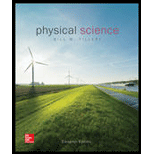
Physical Science
11th Edition
ISBN: 9780077862626
Author: Bill Tillery, Stephanie J. Slater, Timothy F. Slater
Publisher: McGraw-Hill Education
expand_more
expand_more
format_list_bulleted
Textbook Question
Chapter 16, Problem 8QFT
Briefly describe how Earth’s axis is used as a reference for a system that identifies locations on Earth’s surface.
Expert Solution & Answer
Want to see the full answer?
Check out a sample textbook solution
Students have asked these similar questions
Describe the shape of Earth's orbit. Where is the Sun located within the orbit?
Describe the shape of Earth's orbit. Where is the Sun located within the orbit? Explain.
Based on what you've learn on the impact of the Earth-Sun distance on the seasons, what can you say about the the cause of the seasons? (Give ALL correct answers, i.e., B, AC, BCD...)A) Earth's axis is tilted an an angle of 23.5 degrees compared to a line perpendicular (straight up and down) to its orbit, which is the main cause for the seasons.B) Earth's speed varies in its orbit around the Sun, giving us summer when Earth is moving fastest and winter when Earth is moving slowest.C) The Earth-Sun distance play a major role in creating seasons on Earth.D) The tilt of Earth's axis causes the Northern Hemisphere to be closer to the Sun than the southern hemisphere in summer, and vice versa in winter. E) The tilt of Earth's axis causes different portions of the Earth to receive more or less direct sunlight at different times of year.F) Earth's Northern Hemisphere is always tilted away from the Sun at an angle of 23.5 degrees.G) Earth's Northern Hemisphere is always tilted toward the Sun…
Chapter 16 Solutions
Physical Science
Ch. 16 -
l. The plane of Earth’s orbit is called...Ch. 16 -
2. The spinning of a planet on its axis, an...Ch. 16 -
3. The consistent tilt and the orientation of its...Ch. 16 -
4. In the Northern Hemisphere, the North Pole...Ch. 16 -
5. The referent meridian is the
a. prime...Ch. 16 -
6. The parallel at 66.5°S is called the
a. Arctic...Ch. 16 -
7. The movement of the Sun across the celestial...Ch. 16 -
8. Clocks and watches are set to measure a...Ch. 16 -
9. How many standard time zones are...Ch. 16 -
10. The 180° meridian is called the
a. tropic of...
Ch. 16 -
11. The time period from one new moon to the next...Ch. 16 -
12. Maria are
a. craters on the...Ch. 16 -
13. Unmanned missions to the Moon did not find or...Ch. 16 -
14. Rocks on the surface of the Moon are...Ch. 16 - Prob. 15ACCh. 16 -
16. The approximate age of the Moon was...Ch. 16 -
17. What is the accepted theory about the origin...Ch. 16 -
18. The Moon is positioned between Earth and the...Ch. 16 -
19. Tides that occur at the full and new moon...Ch. 16 -
20. Friction between the tides and the ocean...Ch. 16 -
21. Earth is undergoing a combination of how many...Ch. 16 -
22. In the Northern Hemisphere, city A is located...Ch. 16 -
23. Earth as a whole receives the most solar...Ch. 16 -
24. During the course of a year and relative to...Ch. 16 -
25. If you are located at 20°N latitude, when...Ch. 16 -
26. If you are located on the equator (o°...Ch. 16 -
27. If you are located at 40°N latitude, when...Ch. 16 - Prob. 28ACCh. 16 -
29. Evidence that Earth is rotating is provided...Ch. 16 -
30. In about 12,000 years, the star Vega will be...Ch. 16 -
31. The significance of the tropic of Cancer...Ch. 16 -
32. The significance of the Arctic Circle (66.5°N...Ch. 16 -
33. In the time 1 P.M., the P.M. means
a. “past...Ch. 16 -
34. Clock time is based on
a. sundial time.
b. an...Ch. 16 -
35. An apparent solar day is
a. the interval...Ch. 16 -
36. The time as read from a sundial is the same...Ch. 16 -
37. You are traveling west by jet and cross three...Ch. 16 -
38. If it is Sunday when you cross the...Ch. 16 -
39. What has happened to the surface of the Moon...Ch. 16 -
40. If you see a full moon, an astronaut on the...Ch. 16 -
41. A lunar eclipse can occur only during the...Ch. 16 -
42. A total solar eclipse can occur only during...Ch. 16 -
43.A lunar eclipse does not occur every month...Ch. 16 -
44. The smallest range between high and low tides...Ch. 16 -
45. Earth’s axis points toward
a. constellation...Ch. 16 -
46. At the summer solstice, the Sun is
a. low in...Ch. 16 -
47. Earth is positioned between the Sun and the...Ch. 16 -
1. Briefly describe the more conspicuous of...Ch. 16 -
2. Describe some evidences that (a) Earth is...Ch. 16 -
3. Describe how the Foucault pendulum provides...Ch. 16 -
4. Where on Earth are you if you observe the...Ch. 16 -
5. What is the meaning of the word solstice? What...Ch. 16 -
6. What is the meaning of equinox? What causes...Ch. 16 -
7. What is precession?
Ch. 16 -
8. Briefly describe how Earth’s axis is used as a...Ch. 16 -
10. The tropic of Cancer, tropic of Capricorn,...Ch. 16 -
11. What is the meaning of (a) noon, (b) A.M.,...Ch. 16 -
12. Explain why standard time zones were...Ch. 16 -
13. When it is 12 noon in Texas, what time is it...Ch. 16 -
14. Explain why a lunar eclipse is not observed...Ch. 16 -
15. Use a sketch and briefly describe the...Ch. 16 -
16. Using sketches, briefly describe the...Ch. 16 -
17. If you were on the Moon as people on Earth...Ch. 16 -
18. What are the smooth, dark areas that can be...Ch. 16 -
19. What made all the craters that can be...Ch. 16 -
20. What phase is the Moon in if it rises at...Ch. 16 -
21. Why doesn't an eclipse of the Sun occur at...Ch. 16 -
22. Is the length of time required for the Moon...Ch. 16 -
23. What is an annular eclipse? Which is more...Ch. 16 -
24. Does an eclipse of the Sun occur during any...Ch. 16 -
25. Identify the moon phases that occur with (a)...Ch. 16 -
26. What was the basic problem with the Julian...Ch. 16 -
27. What is the source of the dust found on the...Ch. 16 -
28. Describe the four stages in the Moon's...Ch. 16 -
29. Explain why every one on the dark side of...Ch. 16 -
30. Explain why there are two tidal bulges on...Ch. 16 -
1. What is the significance of the special...Ch. 16 - Prob. 2FFACh. 16 - Prob. 3FFACh. 16 - Prob. 4FFACh. 16 - Prob. 5FFACh. 16 - Prob. 6FFACh. 16 - Prob. 1PEBCh. 16 - Prob. 2PEBCh. 16 - Prob. 3PEBCh. 16 - Prob. 4PEBCh. 16 - Prob. 5PEBCh. 16 - Prob. 6PEBCh. 16 -
7. What is the rotational velocity of Edmonton,...Ch. 16 -
8. What is the rotational velocity of Nassau,...Ch. 16 -
9. A satellite at an altitude of 36,000 km is in...Ch. 16 - Prob. 10PEBCh. 16 - Prob. 11PEBCh. 16 -
12. What is the age of a 75–year-old person in...Ch. 16 - Prob. 13PEBCh. 16 - Prob. 14PEBCh. 16 -
15. How far away is the Moon at apogee if a...
Additional Science Textbook Solutions
Find more solutions based on key concepts
The magnitude of force of gravity.
Physics (5th Edition)
Given: W = 132 J t = 7.00 s p = ?
Applied Physics (11th Edition)
You have a summer job at your universitys zoology department, where youll be working with an animal behavior ex...
Essential University Physics: Volume 1 (3rd Edition)
What is a concept?
Integrated Science
1.19 [I] An ant walked 10.0 cm across the floor in 6.2 s. What was its average speed in m/s?
[Hint: 2 signi...
Schaum's Outline of College Physics, Twelfth Edition (Schaum's Outlines)
Knowledge Booster
Learn more about
Need a deep-dive on the concept behind this application? Look no further. Learn more about this topic, physics and related others by exploring similar questions and additional content below.Similar questions
- Would you expect the distance between Earth and Mars to vary? Briefly explain your answer.arrow_forwardExplain three lines of evidence that indicate that the seasons in North America are not caused by the changing Earth-Sun distance as a result of Earth’s elliptical orbit around the Sun.arrow_forwardWhat are advantages and disadvantages of apparent solar time? How is the situation improved by introducing mean solar time and standard time?arrow_forward
- Explain the origin of the leap year. Why is it necessary?arrow_forwardIn a part of Earth’s orbit where Earth is moving faster than usual around the Sun, would the length of the solar day change? If so, how? Explain.arrow_forwardWhy do we observe phases of the inner planets but not the outer planets. Provide examples, and describe the phases(use the names of the relevant lunar phases,such as waxing gibbous, banning crescent, this quarter, new. full, etc)of the inner planets dependently on their location relatively to the Sun and the Earth. Particularly specify the cases of the greatest eastern and western elongations on the Venus's example , and describe phase of Venus as it is seen from Earth during those two configurations.arrow_forward
- What is declination? Discuss the degree of declination of the Moon and Sun relative to Earth’s equator. What are the effects of declination of the Moon and Sun on the tides?arrow_forwardDescribe the retrograde motion of mars and how it was explained in terms of both a heliocentric and geocentric model of the solar system. Key terms to be included: relative velocitys of earth and mars, background stars and epicyclesarrow_forward
arrow_back_ios
arrow_forward_ios
Recommended textbooks for you
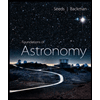 Foundations of Astronomy (MindTap Course List)PhysicsISBN:9781337399920Author:Michael A. Seeds, Dana BackmanPublisher:Cengage Learning
Foundations of Astronomy (MindTap Course List)PhysicsISBN:9781337399920Author:Michael A. Seeds, Dana BackmanPublisher:Cengage Learning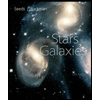 Stars and Galaxies (MindTap Course List)PhysicsISBN:9781337399944Author:Michael A. SeedsPublisher:Cengage Learning
Stars and Galaxies (MindTap Course List)PhysicsISBN:9781337399944Author:Michael A. SeedsPublisher:Cengage Learning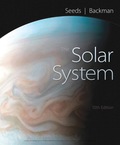
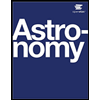 AstronomyPhysicsISBN:9781938168284Author:Andrew Fraknoi; David Morrison; Sidney C. WolffPublisher:OpenStax
AstronomyPhysicsISBN:9781938168284Author:Andrew Fraknoi; David Morrison; Sidney C. WolffPublisher:OpenStax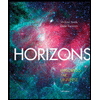 Horizons: Exploring the Universe (MindTap Course ...PhysicsISBN:9781305960961Author:Michael A. Seeds, Dana BackmanPublisher:Cengage Learning
Horizons: Exploring the Universe (MindTap Course ...PhysicsISBN:9781305960961Author:Michael A. Seeds, Dana BackmanPublisher:Cengage Learning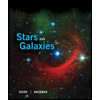 Stars and GalaxiesPhysicsISBN:9781305120785Author:Michael A. Seeds, Dana BackmanPublisher:Cengage Learning
Stars and GalaxiesPhysicsISBN:9781305120785Author:Michael A. Seeds, Dana BackmanPublisher:Cengage Learning

Foundations of Astronomy (MindTap Course List)
Physics
ISBN:9781337399920
Author:Michael A. Seeds, Dana Backman
Publisher:Cengage Learning

Stars and Galaxies (MindTap Course List)
Physics
ISBN:9781337399944
Author:Michael A. Seeds
Publisher:Cengage Learning


Astronomy
Physics
ISBN:9781938168284
Author:Andrew Fraknoi; David Morrison; Sidney C. Wolff
Publisher:OpenStax

Horizons: Exploring the Universe (MindTap Course ...
Physics
ISBN:9781305960961
Author:Michael A. Seeds, Dana Backman
Publisher:Cengage Learning

Stars and Galaxies
Physics
ISBN:9781305120785
Author:Michael A. Seeds, Dana Backman
Publisher:Cengage Learning
Time Dilation - Einstein's Theory Of Relativity Explained!; Author: Science ABC;https://www.youtube.com/watch?v=yuD34tEpRFw;License: Standard YouTube License, CC-BY